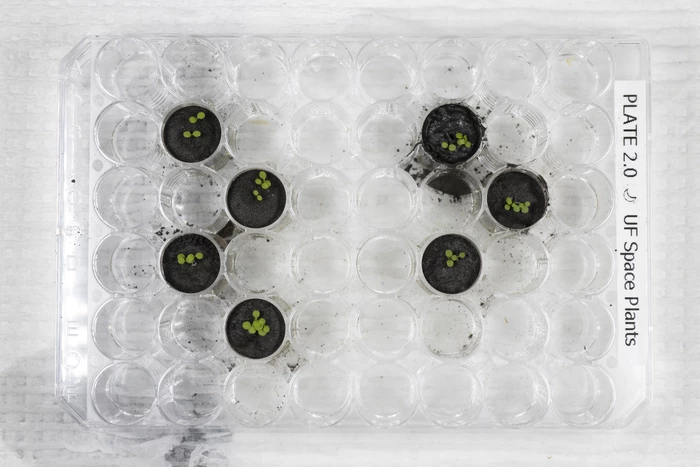The field of lunar agriculture has taken a big step forward, with scientists reporting the first ever plants grown in soil from the Moon. While the process resulted in something far from an edible meal, the team's success marks a significant milestone in the effort to sustain a lunar base and carry out missions into deep space, and offers useful insights into the makeup and viability of the foreign soil.
It may not come as a surprise that lunar soil is in short supply here on Earth, so carrying out these sorts of experiments is hardly a straightforward undertaking. We've seen scientists find success in sprouting crops in simulated lunar soils sourced from the desert in Arizona, and some research groups have developed greenhouse-like modules that could be transplanted to the Moon. In 2019, China's Chang'e-4 probe sprouted the first ever seeds on the lunar surface inside a miniature biosphere it took along for the ride, though they died less than 24 hours later.
The latest breakthrough in this area was led by Anna-Lisa Paul and Rob Ferl from the University of Florida, who actually applied three separate times over 11 years to conduct experiments on the lunar soil, or regolith. The soil in question was collected during the Apollo 11, 12 and 17 missions so it carries great historical significance, but the scientists were able to source 12 g (0.4 oz) of the precious material on loan from NASA to grow themselves a tiny garden.
Using pots the size of thimbles, the scientists loaded a gram of lunar soil into each one, moistened it with a nutrient solution and sowed seeds from the Arabidopsis plant. In parallel, the team planted the same seeds in simulated lunar soil, simulated Martian soil and soils from extreme environments on Earth as control experiments. Despite skepticism beforehand, the scientists were pleasantly surprised to find that nearly all the lunar soils produced sprouting plants.

“We were amazed," Paul said. "We did not predict that. That told us that the lunar soils didn’t interrupt the hormones and signals involved in plant germination.”
But it wasn't such smooth sailing for long. The plants grown in the lunar soil were slower to develop and many of them exhibited signs of stress, showing the kinds of gene expressions that the scientists would expect to see in plants subjected to salt, metals and reactive oxygen species.
“At the genetic level, the plants were pulling out the tools typically used to cope with stressors, such as salt and metals or oxidative stress, so we can infer that the plants perceive the lunar soil environment as stressful,” Paul said. “Ultimately, we would like to use the gene expression data to help address how we can ameliorate the stress responses to the level where plants – particularly crops – are able to grow in lunar soil with very little impact to their health.”
One interesting takeaway was that plants grown in more mature lunar soil – soil exposed to more cosmic wind – showed more signs of stress, while less mature soil saw the plants have a smoother ride. As part of their follow-up studies, the scientists will now continue to research this relationship between the plant's wellbeing and makeup of the soil, along with what impacts the plants could have on the soil itself.
“The Moon is a very, very dry place," said study author Stephen Elardo. "How will minerals in the lunar soil respond to having a plant grown in them, with the added water and nutrients? Will adding water make the mineralogy more hospitable to plants?”
The research was published in the journal Communications Biology, while the video below offers and overview of the breakthrough.
Source: University of Florida




